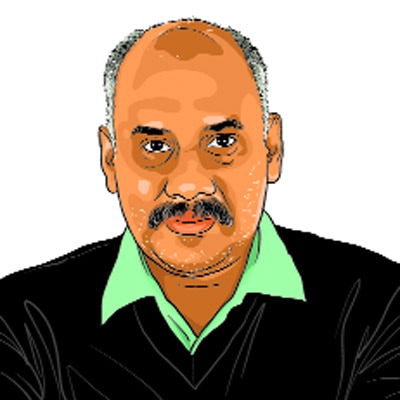As the World Cup caravan is set to roll across the length and breath of India, a pertinent question arises: how does a place and its social milieu shape a cricketer and influence their game? Could Virat Kohli have been the same man and player were he born in Guwahati East and not in West Delhi? Or what would have happened to Kuldeep Yadav had he been from Colaba in Mumbai? We find out in this seven-part series.
In the late 90s, a father in Surat faced a dilemma. Baroda or Mumbai? He wanted his two sons to chase their sporting dreams and for that he was willing to start afresh in a city with a cricketing culture. Eventually, he decided to make Baroda his new home.
That one decision that Hardik Pandya’s father Himanshu took changed the fortunes of his family forever. Baroda would go on to shape the pace all-rounder India had longed for since Kapil Dev. The Atlas on whose shoulder rests the hopes and dreams of billions at this World Cup has a Made in Baroda stamp on him.
If not for Baroda, the Hardik story would have unfolded differently. Mumbai does have its fair share of migrant success stories but cricket hasn’t been truly representative of its myriad milieu. Baroda, on the other hand, has historically welcomed, nurtured and empowered outsiders.
Back in the day, when Vijay Hazare moved from Maharashtra; Baroda gave him respect, a bungalow and the honorable title of ADC to Maharaja Pratapsinhrao Gaekwad. This tradition would even survive the political integration of the princely states post-independence.
So when Zaheer Khan wasn’t getting a break in Mumbai or when Ambati Rayudu had problems with cricket officials in Hyderabad, they flew to Baroda. For the Pandyas, a Gujarati family with modest means, cost of living and language were the practical middle-class reasons for preferring Baroda over Mumbai. Little did they know that history too, nodded vigorously at their decision.
XXX
Back in the day, Baroda’s erstwhile rulers, the Gaekwads promoted and played the game. The present day Maharaj is a first-class cricketer. While in his teens Samarjeetsinh Gaekwad got picked for the India camp for the country’s top juniors that had a young Anil Kumble. He couldn’t benefit from the big break since his school didn’t grant leave.
His home is the city’s stunning showpiece – the 100-room Laxmivilas palace that has a golf course and the Motibaug cricket ground. A Doon School alumni, Samarjeet is urbane and articulate. He weighs his words, speaks in a measured tone. His cricketing heart is in the right place. He travels to England to watch Test cricket, is puzzled by the power of the turbo-charged modern-day bats and is pained by the quality of pitches.
He isn’t prone to exaggeration and sticks to facts when he speaks about his forefathers who founded and funded the BCCI.
Samarjeet gets the drift of the story, he calls Baroda a melting pot, a Gujarat city with Maharashtrian royalty. MS University, oil PSUs and other heavy industries would bring in new settlers. Nayan Mongia would inadvertently give his city’s famed cultural diversity the loudest big shout out. When he kept for India, the stump microphone would catch his ‘Aai ga’ every time the ball missed the edge. A Punjabi from Gujarat instantly breaking into Marathi – that’s Baroda. Over the years, the inclusiveness of the cricket-crazy city has reflected on the Baroda score sheet that has names like More, Gaekwad, Singh, Narula, Hooda, Mongia, Patel, Pathan, Khan, Kumar, Sharma and Pandya.
Samarjeet gives the context: “Baroda is the most cosmopolitan city in Gujarat, even more than Ahmedabad. It has always attracted talent. Since early times a lot of eminent people moved here. This was a state that was professionally managed by a Diwan, a highly educated person with experience in governance. Baroda has been progressive and forward-looking. There were land reforms, courts and libraries.”
This city with a rainbow hue would turn a shy boy into a confident motor mouth, inspirational captain, brand and youth icon. His exposure to new dialects, languages, tastes, habits and lifestyles in Baroda opened his mind. This went a long way in him adapting to the multi-national Mumbai Indians dressing room where he flowered and bloomed.
Like most young Indian cricketers he didn’t just hang around other domestic players, stay put in his hotel room, order Indian food and watch Bollywood songs. Among his best friends at MI were the boys from the West Indies. He borrowed their fashion ideas, accent and also Calypso brand of cricket. Along with loose cargos, chunky gold chains; he also adopted the cool temperament and powerful stroke play.
Samarjeet says Hardik has a “personality” and how unrelenting hard work and T20 cricket fast-tracked him. Ask him to describe a typical Baroda cricketer and he gives an apt answer. “Baroda cricket has become more flamboyant now. They leave a mark on the side,” he says. The nail has been hit powerfully on the head. Atul Bedade, Yusuf Pathan, Hardik Pandya – the country’s greatest modern day big hitters had the Baroda flamboyance. There can’t be a better man than Bedade, the Baroda Buccaneers pioneer to talk about Hardik.
XXXX
These days, Bedade is the coach of Baroda’s Under-19 team. When you call, he has just returned from a game. The Buccaneer has truly retired. These days he tells youngsters to avoid playing in the air. Before finishing his sentence, he breaks into a laugh. The joke would be lost on those who haven’t followed his career. Built like a boxer, the south-paw had great hands but limited footwork. Once in 1994, he played a game at Sharjah against Pakistan and hit four towering sixes. India lost the game but the fans fell for Bedade. He didn’t last long but for the children of the 90s he became the mythical superhero who appeared on the horizon and soon disappeared.
He talks about how Hardik benefitted from the “big city” cricketing facilities within this “small city”. That’s what Samarjeet had also hinted at when he spoke about Baroda’s 10 to 12 quality grounds, great pitches, year-long camps, endless tournaments and many experienced cricketers with eye to spot talent.
Bedade, from his own experience, adds: “Baroda shows patience too. Just today I told my Under-19 team, toh pura season kheloge, jao maaro (you will play the entire season, go and hit out). That’s the support Hardik got, I got and even Yusuf got”.
Baroda has been progressive with its cricket too. Back in the 80s, it was first to innovate with a single-wicket tournament. “There was good money in those tournaments. The public would give money for a six hit or after that game a senior cricketer would hand the star striker of the day Rs 100 to 200 in a cover,” he says. You would have made a killing? Bedade skirt the questions. “That was big money. Petrol was 10 ka litre that time, gold Rs 4,000 ka tola tha,” he says. Hardik’s single-wicket tournament is the IPL now. Like Bedade he too got money but now the covers have gone fatter.
The license to play freely and incentive to hit sixes gives Hardik the courage to play a fearless brand of cricket. “There is something in the water here that makes us fearless,” says Bedade referring to Baroda’s Vishwamati river that is home of many Mugger crocodiles that enter residential areas during monsoon flooding. “We live with crocodiles, as kids we shoo them away with a stick. Mugger se nahi darr lagta, toh bowler se kya lagega,” he says. It takes a city like Baroda, and its crocodiles, to make a fearless cricketer like Hardik.


 Sandeep Dwivedi… read more
Sandeep Dwivedi… read more

Kings, cricket culture and crocodiles: How Baroda shaped Hardik Pandya, Yusuf Pathan, Atul Bedade – The Indian Express
by
Tags:
Leave a Reply